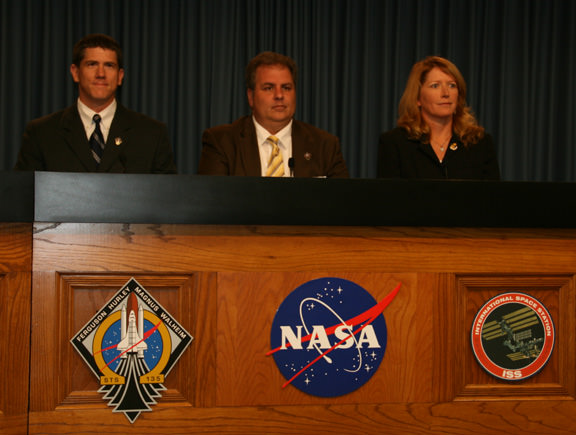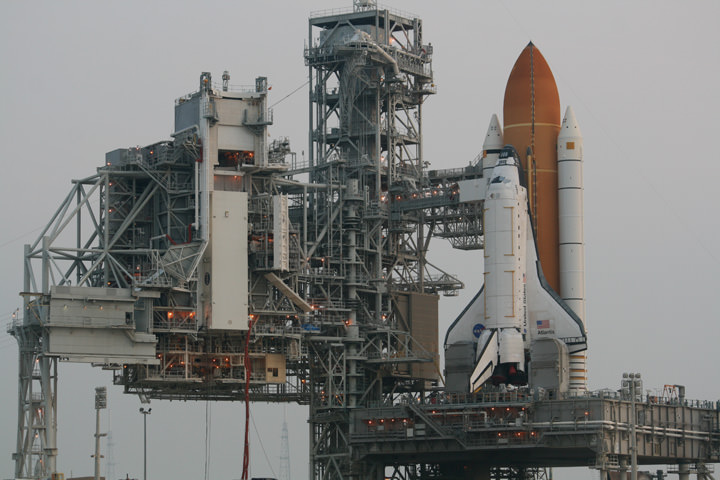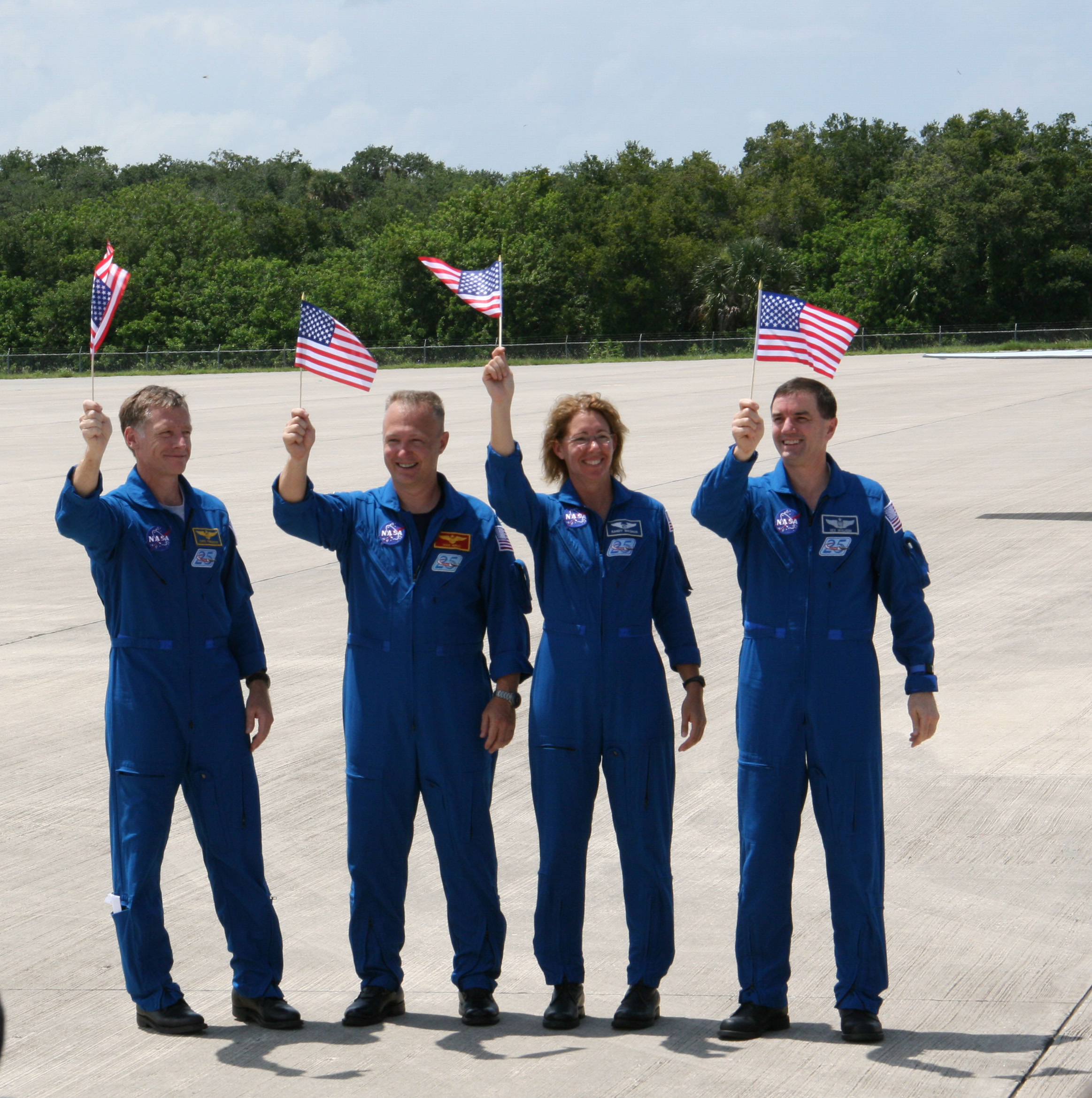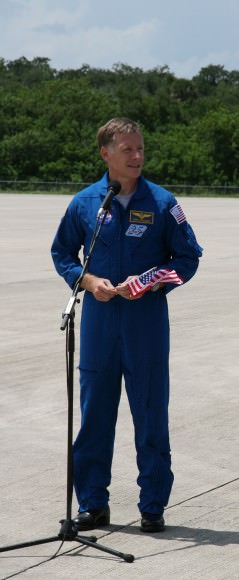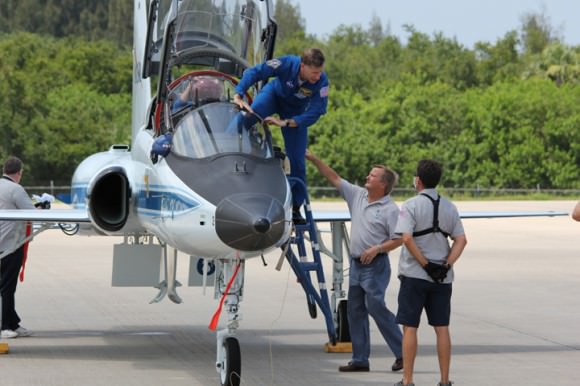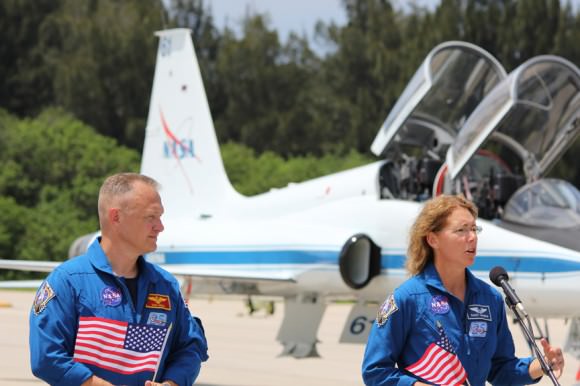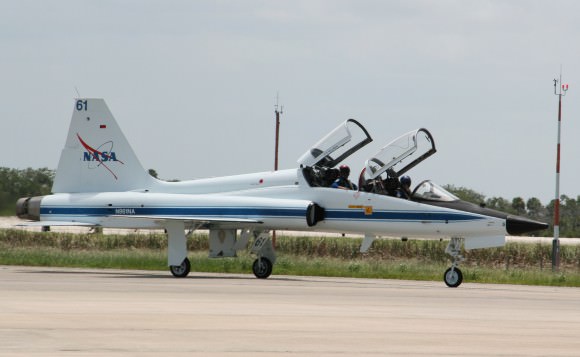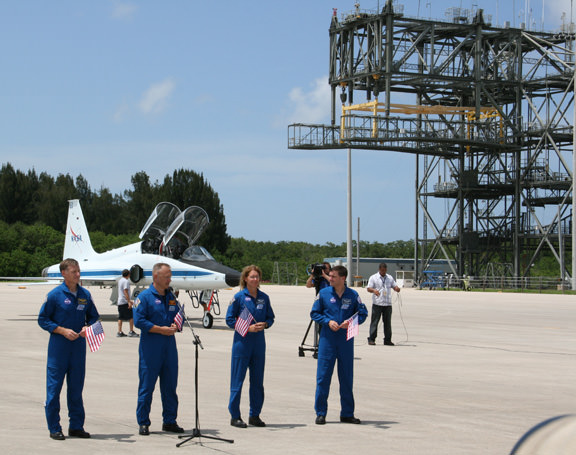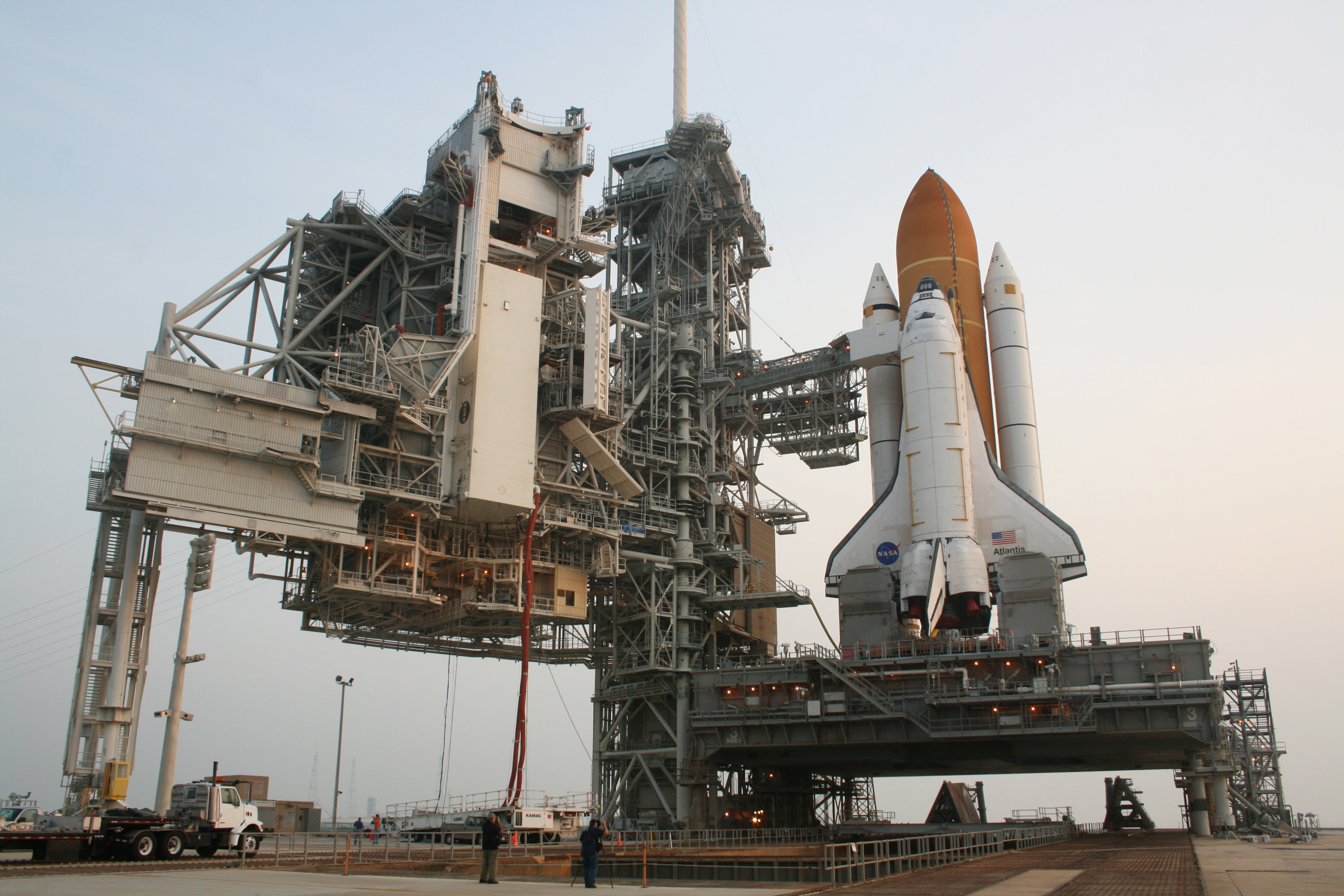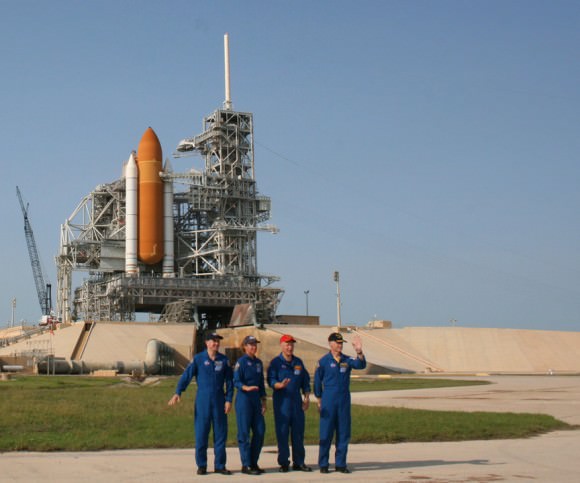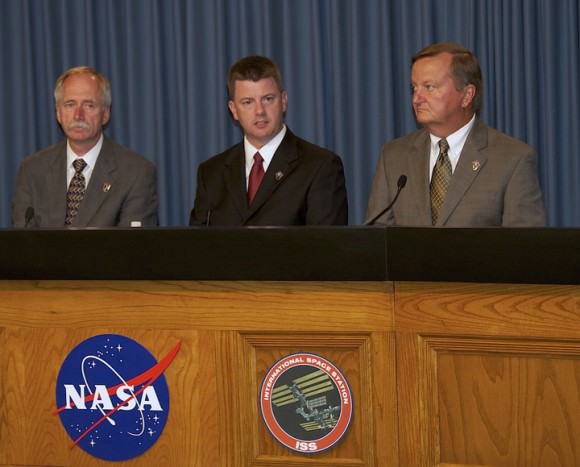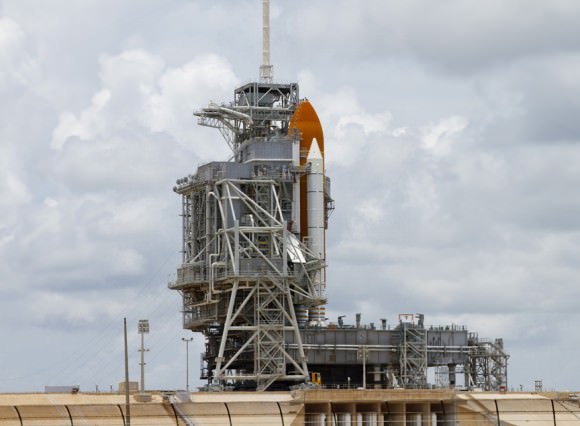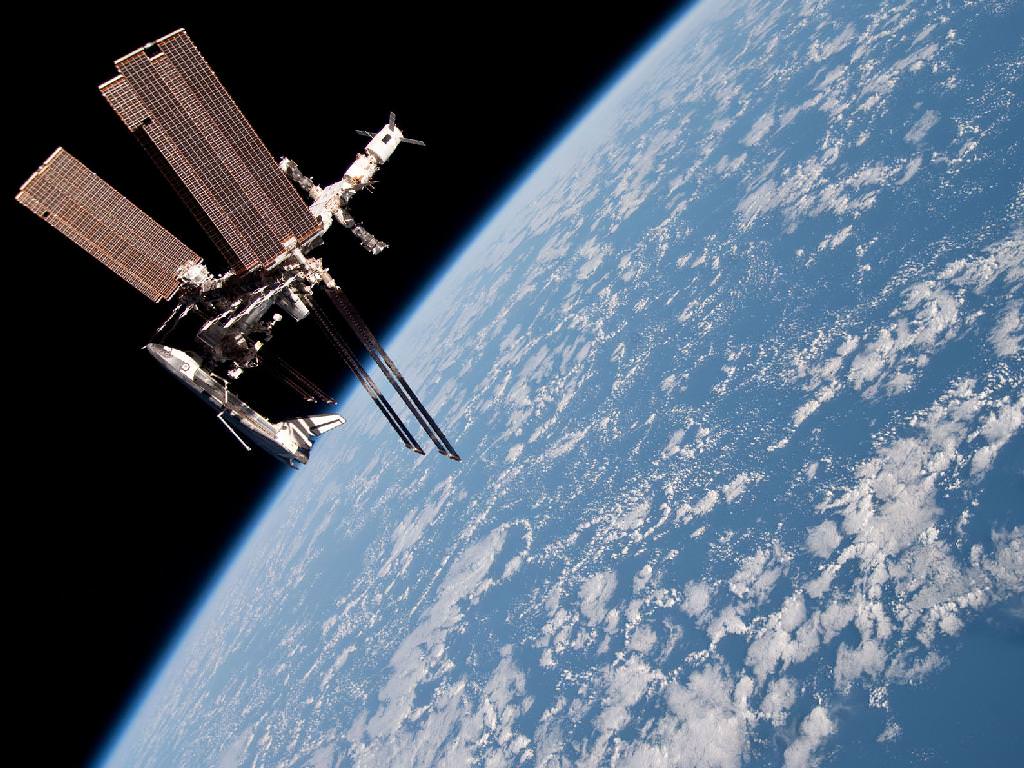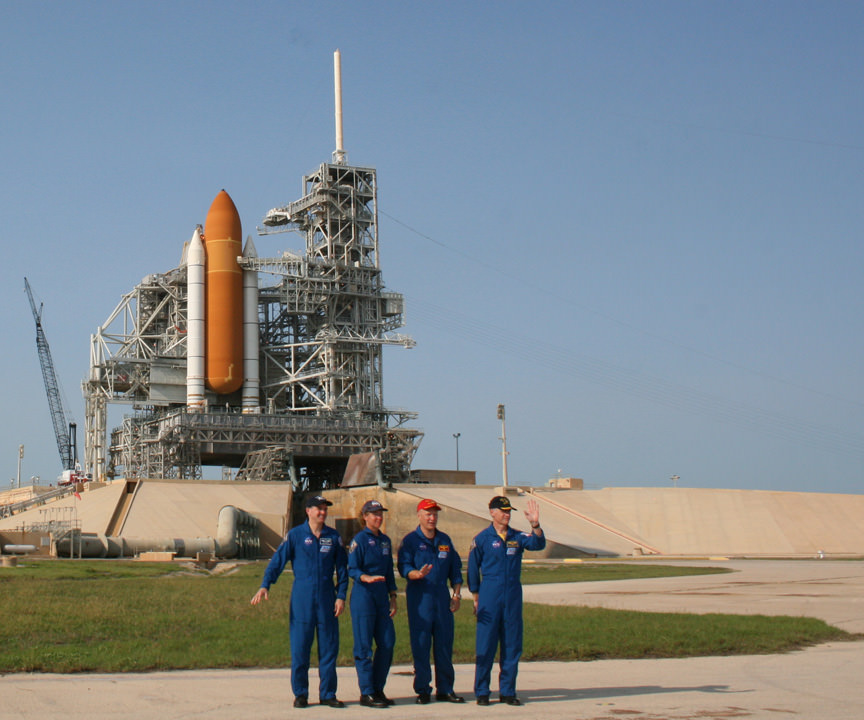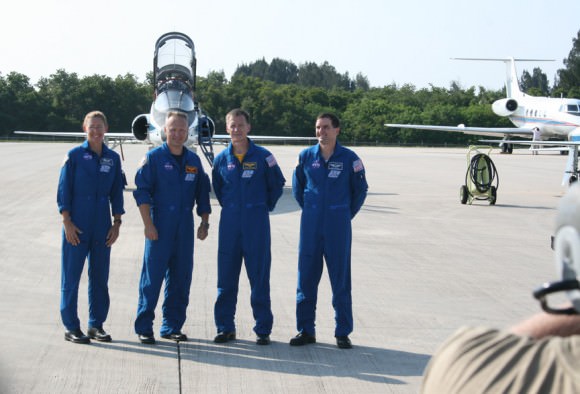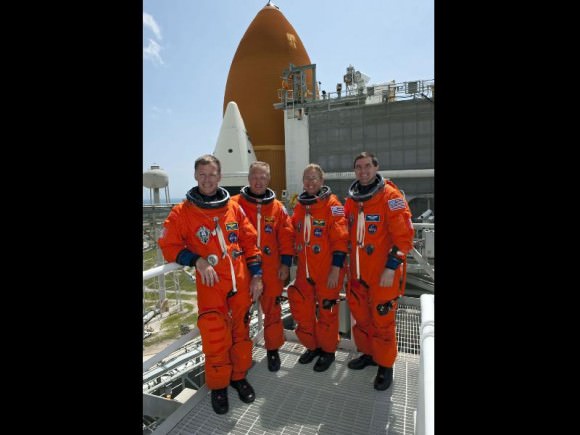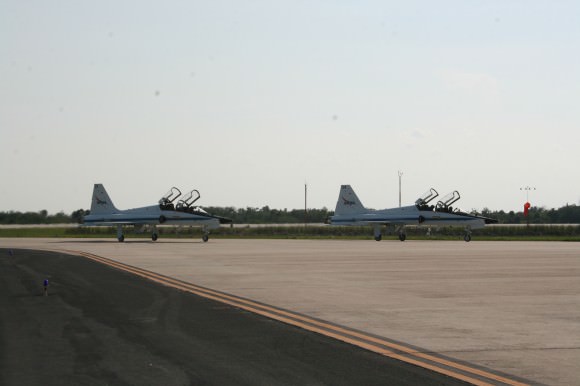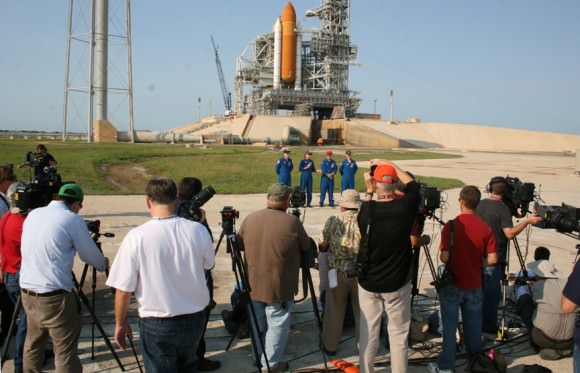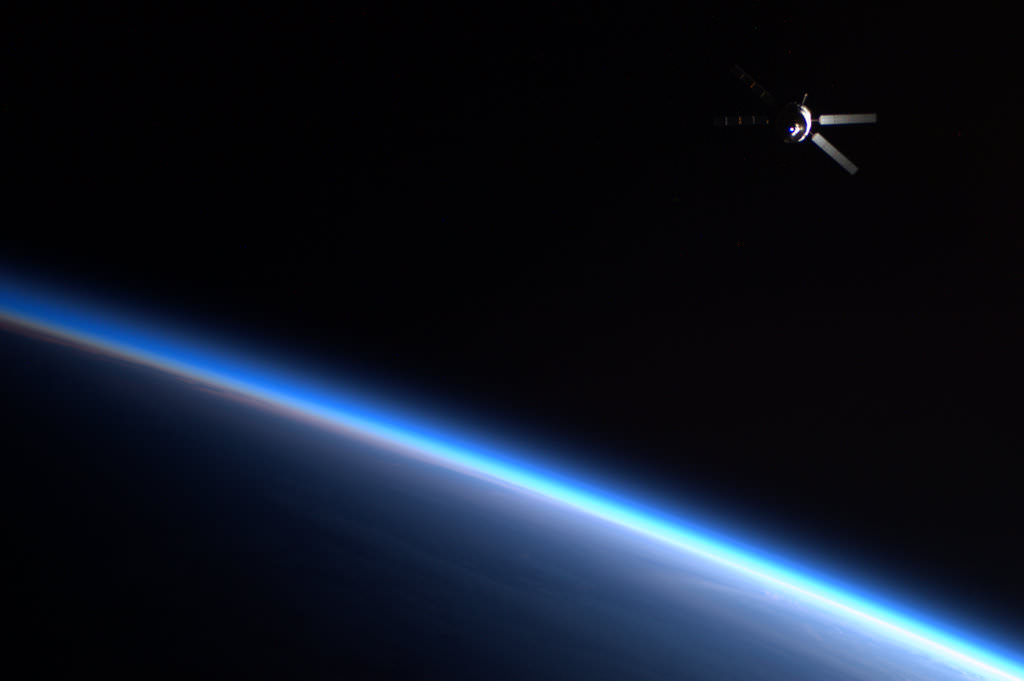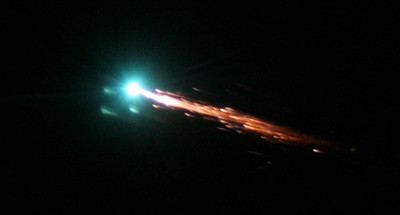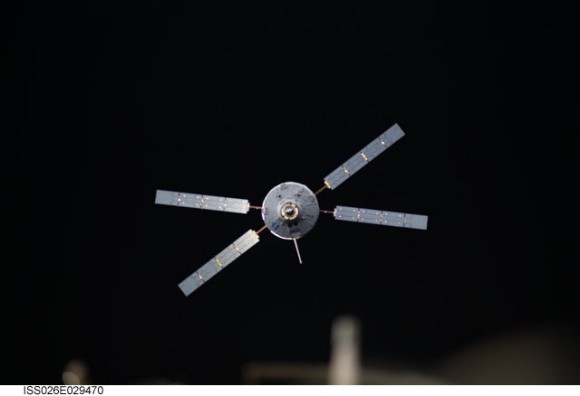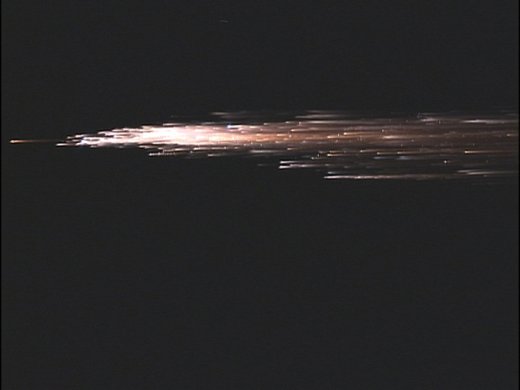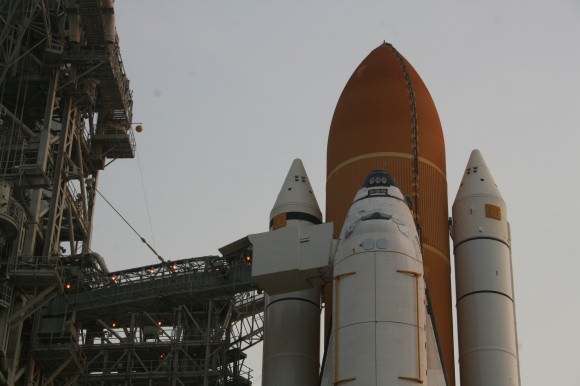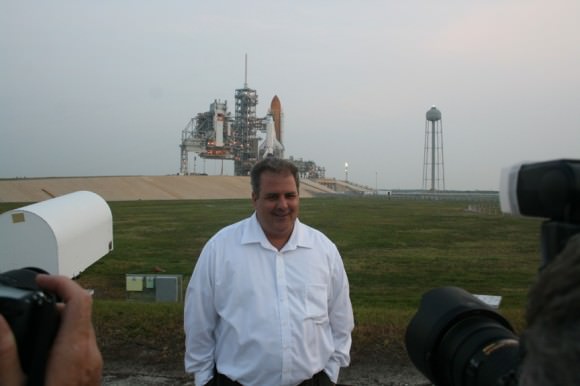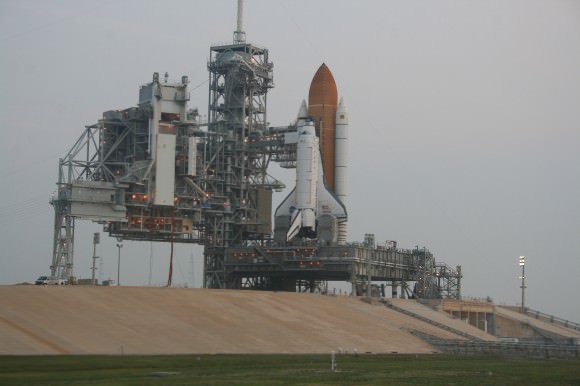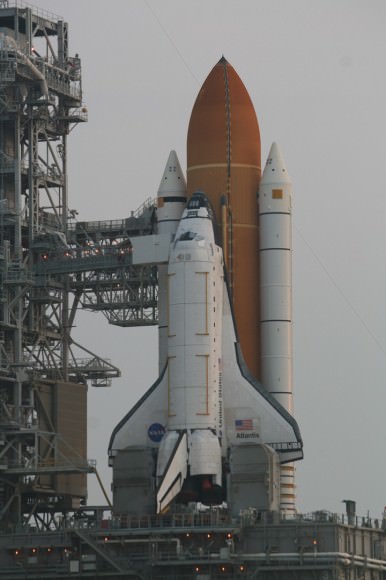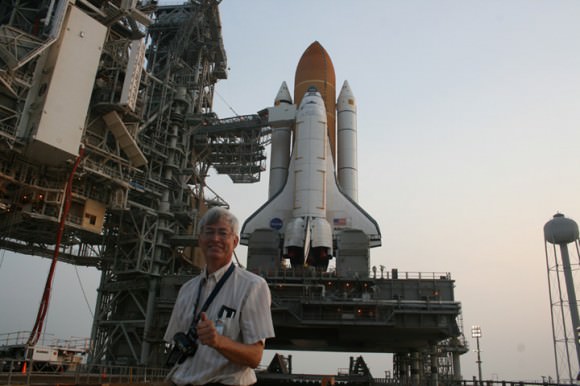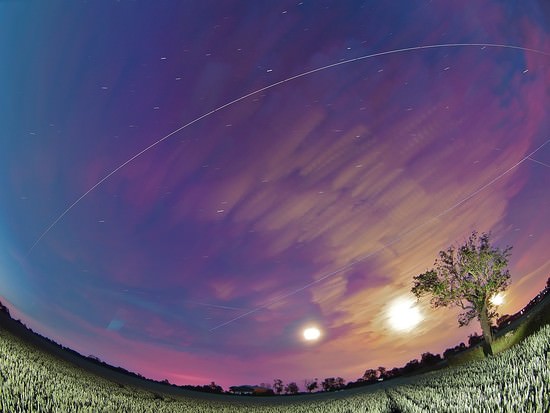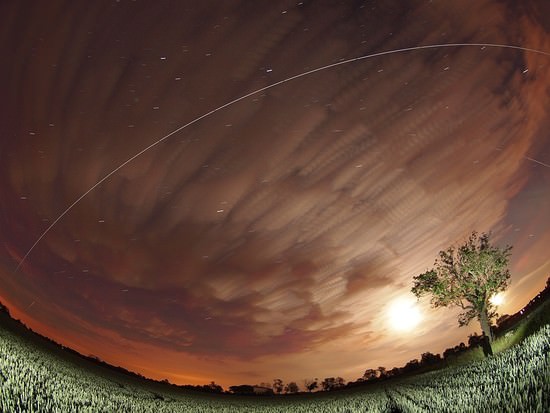[/caption]
The countdown to NASA’s 135th and final shuttle launch began today (July 5) with no technical issues blocking liftoff at this time. But upwards of 750,000 spectators may be disappointed because the weather on launch day, July 8, is looking decidedly dicey. Storm weather and stormy seas lie ahead for NASA.
At today’s press briefing, Shuttle Weather Officer Kathy Winters projected that the chance of favorable weather is only 40% for Friday’s 11.26 a.m. liftoff of Atlantis because of the likely threat of rain at the Kennedy Space Center.
The 12 day STS-135 mission will loft about 9500 pounds of supplies and equipment that NASA shuttle managers state are absolutely “mandatory” in order to keep the International Space Station operating at full capacity for the next year.
“I wish I had a better weather briefing for you, but it does look like we are going to have some weather, at least potential for weather, in the area at launch time,” said Winters. “Right now, we’re going with a 60 percent chance of KSC weather prohibiting launch due to the potential for showers and isolated thunderstorms in the area.”
In the event of a one day delay to Saturday, the chances for favorable weather increases considerably to 60%. For a two day delay to July 10, the chances of acceptable weather climbs to 70%.
After July 10, the liftoff of the STS-135 mission would have to be delayed to July 16 because NASA would be forced to stand down shuttle launch operations in order to allow the Air Force to launch a military navigation satellite on July 14 from Cape Canaveral. That is unless the Air Force relents – out of consideration for the three quarters of a million folks expected to jam the Florida space coast beaches, highways and hotels – and offers NASA the opportunity to launch Atlantis for several days starting on July 11 – in case of a launch delay.
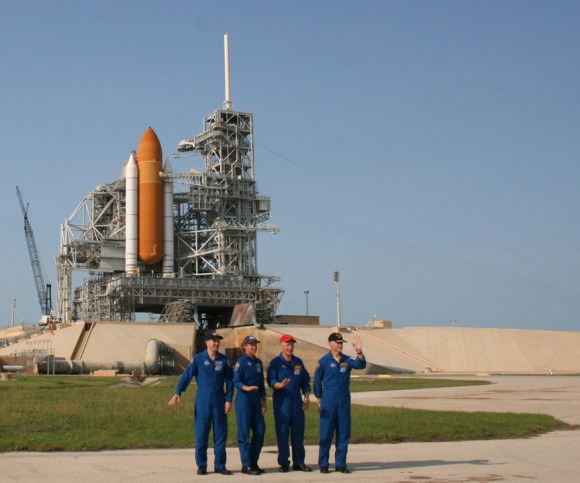
Space fans need to be patient and plan for undesired contingencies just like NASA by packing extra provisions like food, water and clothing and also should consider extended accommodations.
Clocks began ticking backwards today at 1p.m.EDT at the T Minus 43 hour mark towards the final blastoff of Space Shuttle Atlantis.
NASA Test Director Jeremy Graeber said at today’s briefing that Atlantis is ready to fly.
“Our teams here at the Kennedy Space Center and all the NASA centers across the country have been working for over a year to prepare Atlantis, the external tank our solid rocket boosters, the payload and all of our ground systems for the STS-135 mission,” Graeber stated. “All of our vehicle and ground systems are ready, the STS-135 crew, Atlantis and the launch team are all ready to proceed and we’re looking forward to a spectacular launch on Friday morning.”
STS-135 payload manager Joe Delai said the payloads and the Raffaello cargo carrier module are ready to go as well. “The primary objective of Atlantis is to resupply the ISS for one year. About 9500 pounds are going up. This is the largest payload in terms of volume.”
Delai said that Raffaello was specially modified to increase its cargo carrying capacity by several hundred pounds.
The STS-135 mission will bring NASA’s 30 year long shuttle program to a definite close and simultaneously mark the termination of the US capability to launch humans to space for at least several years.
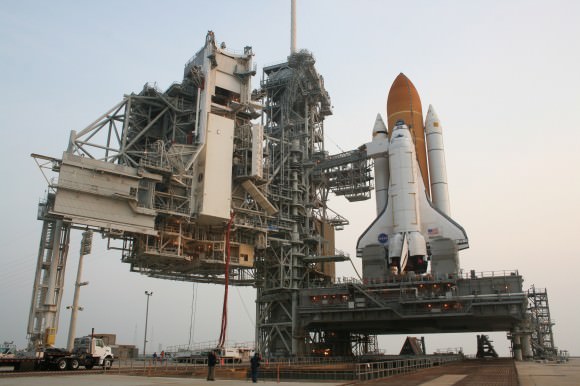
Credit: Ken Kremer
